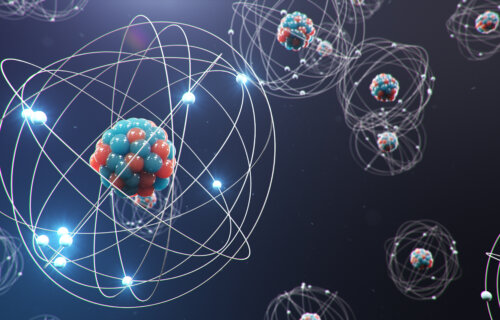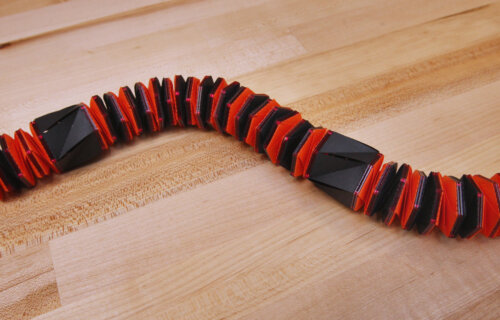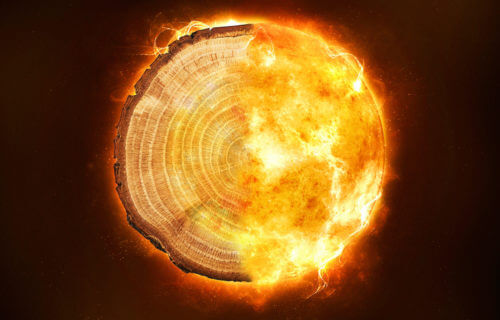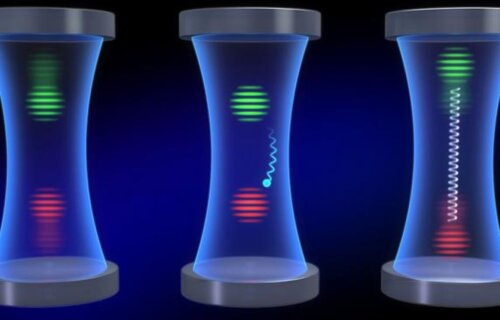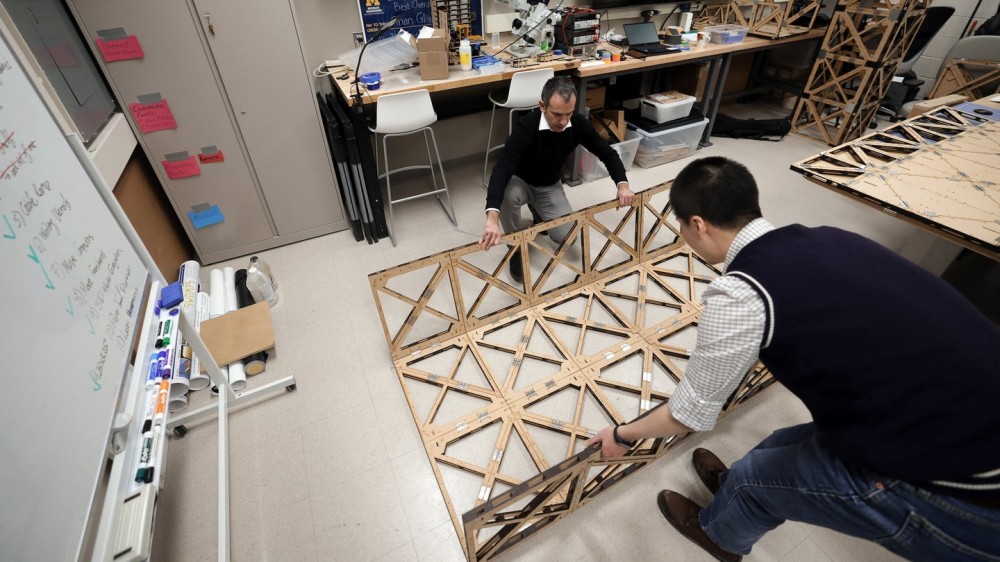
Origami traditionally involves the creation of extremely delicate paper structures, but the art form’s underlying principles could soon be adapted to help navigate tough construction situations. That’s the theory behind a new series of collapsible components designed by a team of University of Michigan engineering professors. When unfolded and assembled using hinges and locks, the researchers’ pieces combine to become extremely sturdy modular structures. Given their design’s impressive durability and spatial economy, the new origami-inspired constructions could be deployed across natural disaster zones, or even in outer space.
The collaborators have detailed their work in a new study published on March 15 in Nature Communications. While the creators used mid-density fiberboard frames alongside aluminum hinges and locking mechanisms in their first tests, they believe materials such as plastic, encased glass, or metal could all work in future iterations.
In one lab example, engineers utilized a single square-foot’s worth of their lattice-like, repeating triangular fiberboard pieces and metal hinges. Despite altogether weighing barely 16-pounds, the parts could combine into a 3.3-foot-tall column capable of supporting over 2 tons of weight. In another scenario, a 1.6-foot-wide cube’s worth of the origami parts could unfold and assemble into multiple structures, such as a 6.5-foot-tall “bus stop,” a 13-foot-tall vertical building column, or same-sized walking bridge.
To pull off their improved construction design, the engineers realized that uniformity beat out selective reinforcements.
[Related: Microflier robots use the science of origami to fall like leaves.]
While other engineers in the past attempted to strategically thicken certain regions of their origami building materials, researchers created their components with a standardized thickness to allow for more evenly distributed weight loads. The result—the Modular and Uniformly Thick Origami-Inspired Structure (MUTOIS) system—not only solves this long-standing stress distribution problem, but allows for immense customizability depending on a user’s needs, such as size, purpose, and materials.
Certain parts can either be completely solid, or contain partial openings within the repeating triangular framework. The pedestrian bridge, for example, employed solid panels for its base alongside trussed panels on either side for “efficient load-carrying,” according to the team’s paper. These modules also allow individual pieces to be replaced and repaired as needed.
The MUTOIS system currently relies on simple connectors instead of more specialized, self-latching designs. As such, the structures require people to manually construct their intended projects, as opposed to robotic-assisted or factory assembly. That said, however, the team believes further research could continue to expand the MUTOIS system’s potential utility to help build “aerospace systems, extra-terrestrial habitats, robotics, mechanical devices, and more.”






